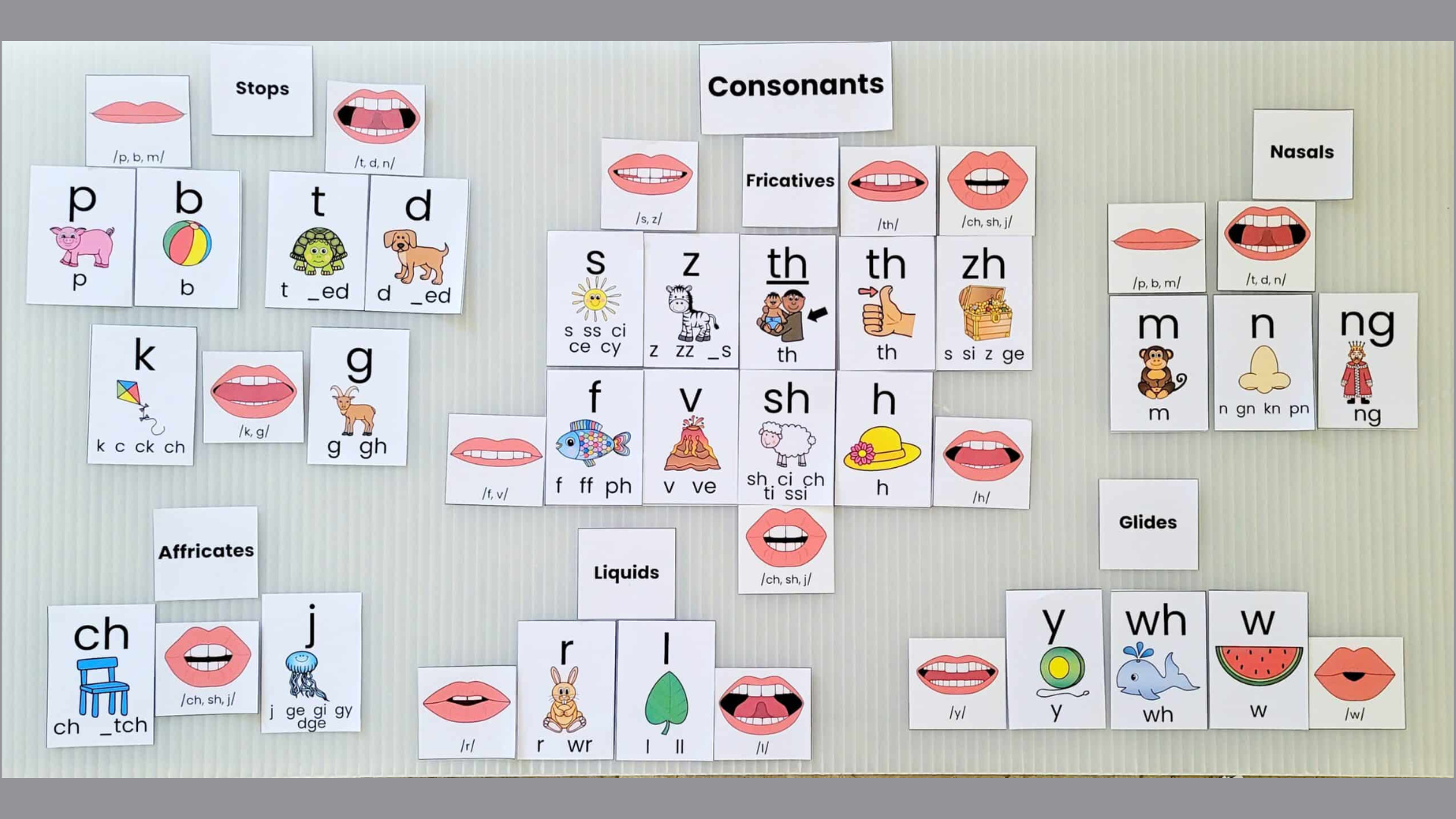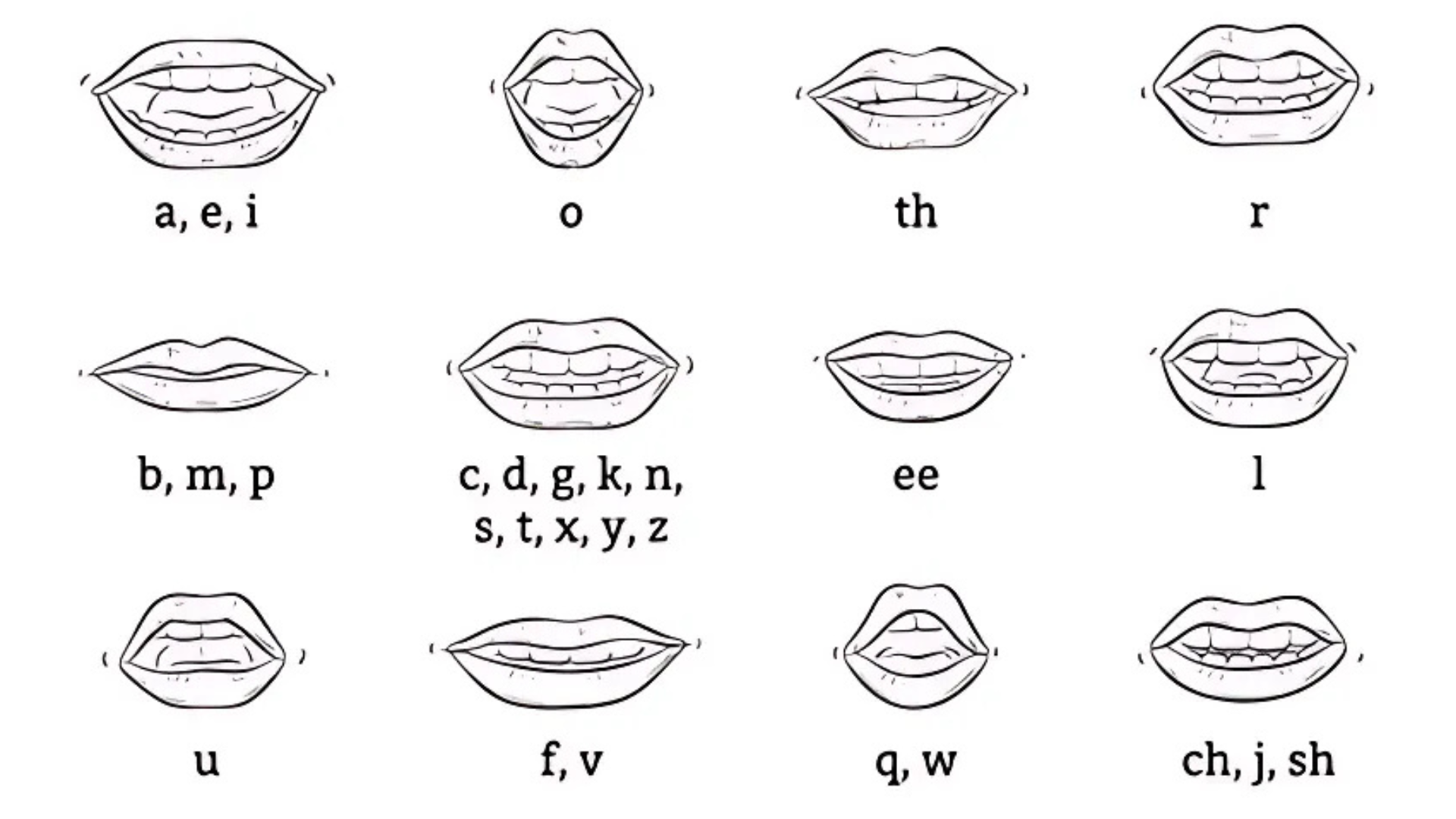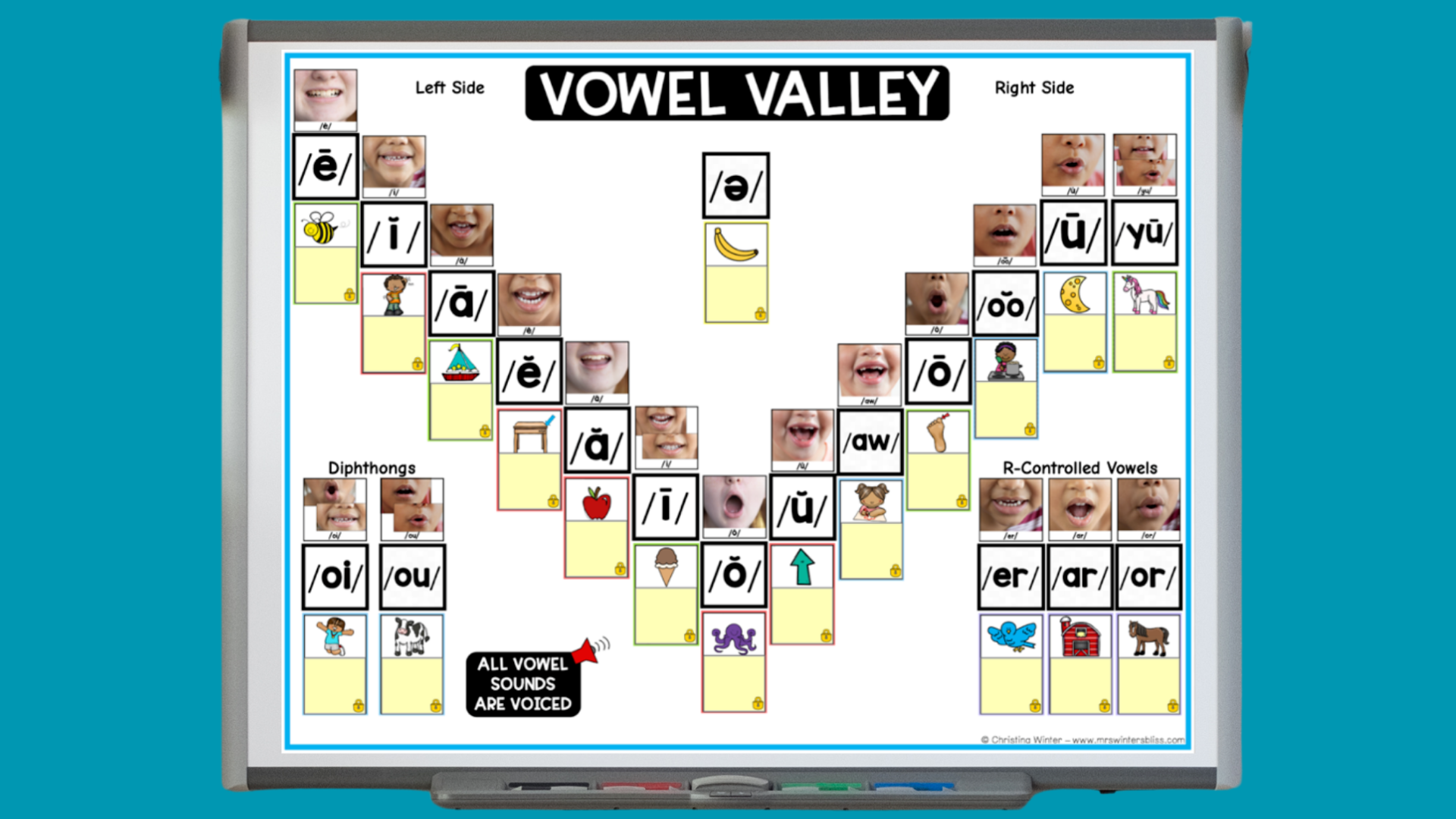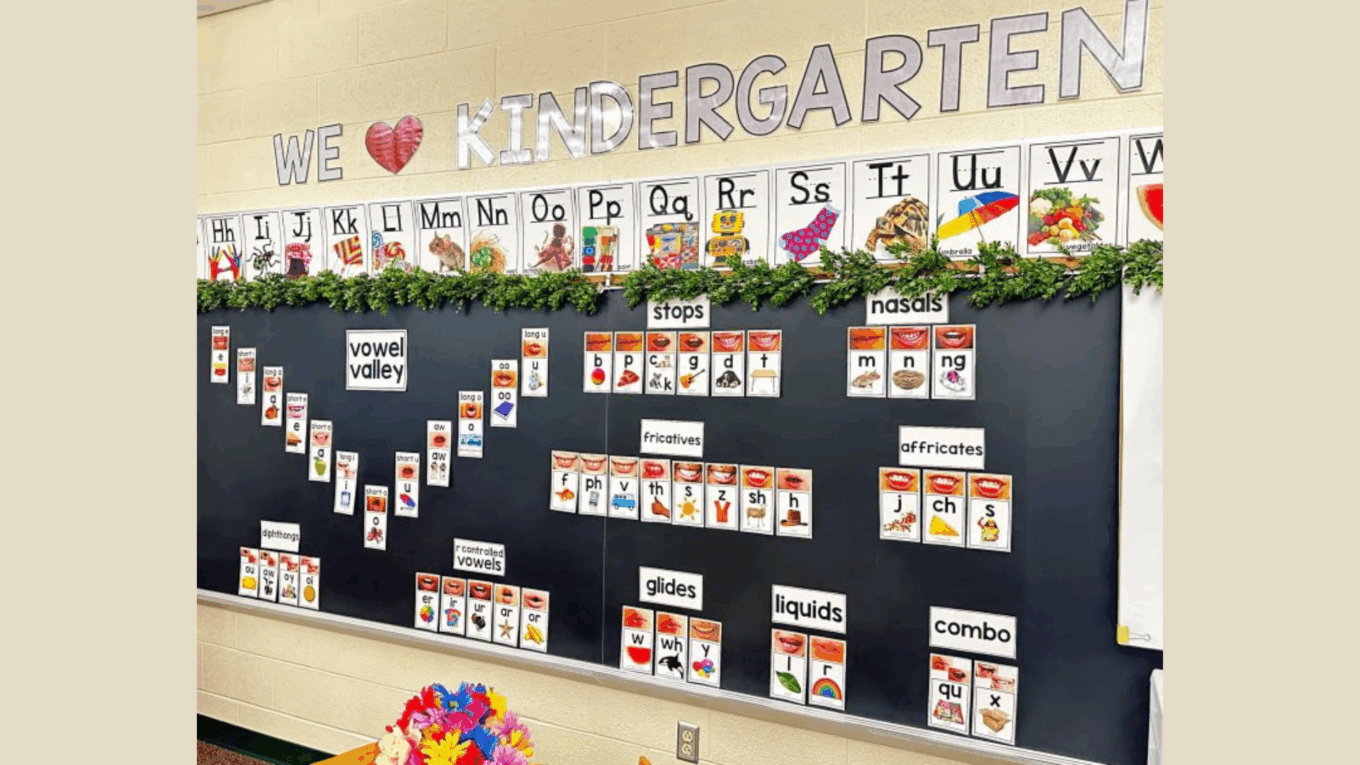Teaching kids to read can be challenging when they struggle with letter sounds.
Many teachers find that traditional word walls don’t help students connect sounds to letters. Sound walls fix this problem by organizing letters based on how our mouths make sounds.
A good sound wall helps kids learn to read faster by showing them how sounds work. It also makes teaching more fun.
This guide will show you how to build your kindergarten sound wall. You’ll learn what materials you need, how to set it up, and tips to help your students get the most from it.
What is a Sound Wall?

A sound wall is a classroom display that helps children learn how speech sounds work in our language. Unlike traditional word walls that show complete words in alphabetical order, a sound wall groups sounds by how we make them with our mouth, tongue, and teeth.
It has two main sections: consonants and vowels. Each sound gets its own spot with a mouth formation card showing students exactly how to position their lips and tongue.
Teachers add the word cards under each sound as children learn new vocabulary. This tool helps kids connect what they hear in speech to what they see in writing, making reading and spelling much easier.
Types of Consonant Sounds:
- Stops: Sounds where air flow completely stops, then releases (like /p/, /b/, /t/, /d/, /k/, /g/)
- Fricatives: Sounds made by forcing air through a narrow space, creating friction (/f/, /v/, /s/, /z/, /sh/, /th/)
- Nasals: Sounds where air flows through the nose (/m/, /n/, /ng/)
- Affricates: Combination sounds that start as stops and end as fricatives (/ch/, /j/)
- Liquids: Flowing sounds where the tongue moves smoothly (/l/, /r/)
- Glides: Sounds that slide into vowels (/w/, /y/)
Parts of a Sound Wall Kindergarten
Here are some important parts of a sound wall:
Mouth Formation Pictures
These images show students how their mouths should look when articulating each sound. For a more personalized approach, you can use photos of students demonstrating the sounds.
Phoneme Cards
Phoneme cards show how a sound is pronounced. They may also indicate whether the sound is voiced or unvoiced, helping students understand the use of vocal cords during sound production.
Key Picture for Each Sound
Each sound should have a corresponding key picture that helps students remember the sound and connect it to a real-life word. This visual association reinforces learning.
Grapheme Spelling Cards
These cards show the different ways each sound can be spelled. It’s important only to introduce spelling patterns as students learn them, rather than overwhelming them with too many cards at once. Velcro dots can be useful for easily adding or removing cards.
How to Set Up a Sound Wall in Kindergarten
Here are simple steps that can help you set up a Sound Wall Kindergarten:
Choose a Wall Space

Select a wall space that students can easily see and reach. The best location for a sound wall kindergarten setup is near the reading corner or group meeting area.
The wall should be at child height so students can touch and interact with the materials. Good lighting helps students see the details clearly. There should be enough space to organize all 44 phonemes without crowding.
A bulletin board or dedicated wall section works well for this purpose.
Print and Prep Phoneme Cards

Print mouth picture cards showing how to make each of the 44 phonemes. These cards help students see tongue and lip positions for correct pronunciation.
The sound wall kindergarten display should group phonemes by how they sound, not in alphabetical order.
Vowel sounds go in one section, and consonant sounds in another. Laminate cards for durability since students will handle them often. Each card needs clear, large images that show mouth movements.
Add Anchor Words & Visuals

Real photos work better than cartoon pictures for anchor words. Attach clear images that match each phoneme sound. For example, the /b/ sound needs a photo of a ball, not a drawing.
Students connect better with actual objects they recognize from their daily lives. The sound wall kindergarten materials should include familiar items like cats, dogs, and toys.
Teachers can ask families to send photos of household items that match specific sounds.
Label with Graphemes

Below each phoneme card, add the different ways to spell that sound. The /k/ sound can be spelled with c, k, or ck letters. Students learn that one sound can have multiple spellings.
Start with the most common spelling first, then add others as students learn them.
Color coding helps students see patterns between sounds and letters. This part of the sound wall kindergarten system builds spelling skills naturally.
Make It Interactive

Leave blank spaces to add new words throughout the year. Students can bring photos from home that match specific sounds.
Seasonal vocabulary fits well on the wall during holidays and special events. You can add student names under sounds that match their beginning letters.
The interactive elements keep students engaged with the materials. Regular updates help maintain interest and provide fresh learning opportunities for the classroom community.
Fun Ways to Use Sound Wall Daily
Sound wall activities help kindergarten students connect letters to the sounds they make.
These simple, hands-on activities make phonics learning fun and help children build strong reading foundations through daily practice.
Morning Sound Workout: Start each day with a quick sound practice. Point to 3-5 sounds on your wall and have students make the mouth shapes together. Ask them to think of words using these sounds.
Sound Detective Game: Play “I Spy” with sounds. Say “I spy something that starts with…” and make the mouth position without saying the sound. Kids figure out the sound and find matching objects.
Sound Sorting Fun: Give students picture cards to sort by their first sound. Working in pairs, they place each picture under the correct sound section on the wall.
Writing Helper Time: Teach kids to use the sound wall when spelling gets tricky. Show them how to feel sounds in their mouth, find that shape on the wall, and use the spelling pattern.
Partner Sound Practice: Pair students to test each other. One child points to a sound while their partner makes the sound and gives a word example. This peer teaching helps everyone learn better.
Sound Wall vs Traditional Word Wall
A word wall shows words students need to learn and remember, usually listed by the first letter.
A sound wall helps students learn to read and spell by organizing words by their sounds instead of letters. Both support reading, but in different ways.
| Feature | Traditional Word Wall | Sound Wall |
|---|---|---|
| Focus | Words (usually sight words) | Sounds and how they are made |
| Content | Lists of words students need to remember | Phonemes (sounds) and their mouth formations |
| Pictures | Pictures of words or objects | Pictures showing how to make each sound |
| Purpose | Helps with word recognition and spelling | Helps with understanding and articulating sounds |
| Cards | Word cards | Phoneme cards with images and graphemes |
| Use in Class | Displayed to help with reading and spelling | Used to teach pronunciation and spelling patterns |
| When Updated | Less frequently, usually with new vocabulary | Frequently, as students learn new sounds and spellings |
Wrapping Up
Setting up a sound wall brings huge benefits to young readers. When kids can see and feel how sounds work, they gain reading skills faster than with old methods.
Your wall should grow with your students. Start small, add sounds as they learn, and make it a daily tool in your classroom.
The most helpful sound walls are the ones kids use often. Through games, hunts, and daily practice, you’ll watch your students become sound experts.
Strong, sound skills lead to strong readers, and that’s why we teach.
Now pick a wall, gather your materials, and start building. Your students will thank you for their reading success!




